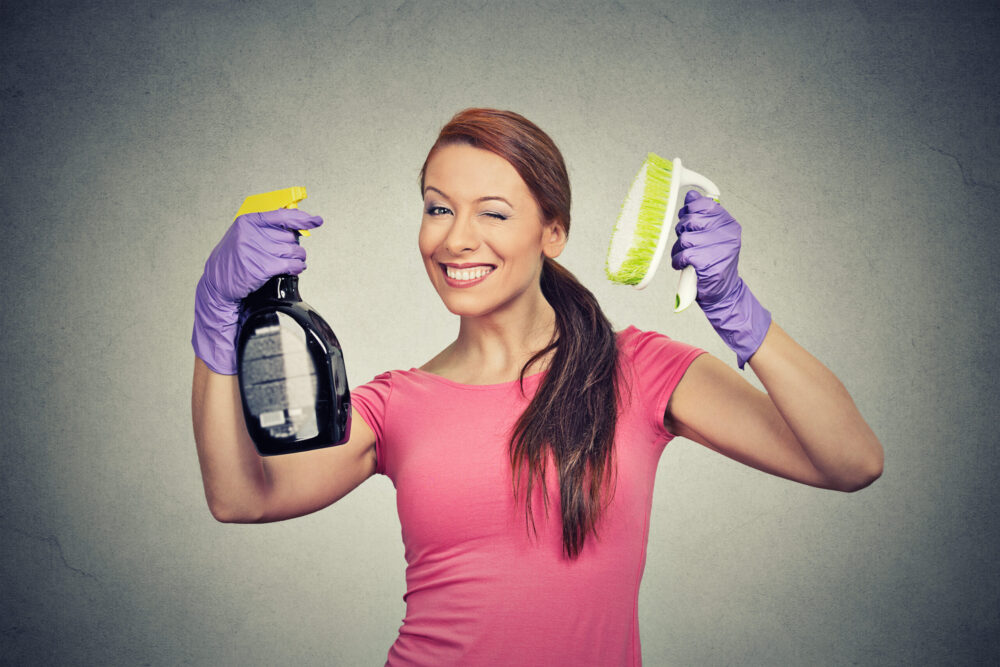Did you see BroadAgenda editor Ginger Gorman’s recent tweet about meal kit company Hello Fresh’s gendered adverts?
Hi @HelloFreshAU is there a reason the woman is always cooking in your ads and her family is ‘rating’ her dinner? #everydaysexism
— Ginger fully vaxxed Gorman 🌈 (@GingerGorman) September 25, 2021
Many people responded on the social media platform about this brand and plenty of other brands too. And they weren’t happy. Their main point was this: So much advertising and marketing is being targeted at only women and this is indeed reflective of every day sexism.
It seems to be everywhere: the telephone operator taking that phone call from you? Usually a woman. The person using the mower and blower in the garden? The man. The person driving the high powered car with an expensive watch to match the corporate attire? A man. The action hero saving the day? Primarily the man.
Yet aren’t marketing agencies and brands who do this only reflecting what really happens in the real world? After all studies show that women do on average more of the housework of men? And women dominate in service industries, and are still prevented from serving in front line defence roles, and the gender gap in pay is alive and well.
So is this advertising just reinforcing that the “norm” should be that women do the work, or is it just reflective of the real world? Let’s pick this apart.
Set in the early 1960s, in the seemingly glamorous “Golden Age” of advertising, the US series “Mad Men” depicts a sexist world most of us would rather leave behind.
Stereotypes or reflective of the real world?
While studies have reflected the gap between the share of housework done by men and women in households, those same studies are also noting that the gaps are getting smaller with men doing more around the house. Cultural and societal norms have changed significantly, and continue to do so, and equality is going to be here sooner and not later.
Then there is another reality: there are hundreds of thousands of households that don’t fit the mum, dad and 2.2 kids “norm”. According to the ABS that is 55%.
And the number of households which don’t fit the stereotype are definitely growing. As playwright and broadcaster Melanie Tait has often discussed, single households have felt overlooked for decades. In addition, same sex marriage is increasing, divorce rates remain stubbornly high (which means there are a large number of sole parent households where there is no division of housework), and then there are the households where step parents, grandparents or other family members also have significant parts in the upbringing of children, and the housework. And let’s not not forget people with disabilities and those who don’t identify as having a gender on a binary scale.
We are also becoming more diverse as a society and culture, splintering in ways which are a marketers nightmare.
The biggest increase in households predicted for the future is single male parent households. Many men are proud parents, and the campaign for equality on issues such as parental leave and care arrangements are driven as much by men as by women. The replies to Ginger Gorman’s tweet from those who identify as men show just how many are as keen for changes in gender in advertising as women so that they can get equal recognition as being as good as parents as their partners.
The world is changing. We are changing.
But sex appeal and attractiveness sells, right?
But some argue that sex appeal and attractiveness still get sales. The infamous FyreFestival used it, the runaway success, for now, of OnlyFans shows it, The Bachelor, The Bachelorette, Love Island, Beauty and the Geek, and the fitness/health/whatever influencers, use attractiveness and sex appeal to sell.
After all, who doesn’t like looking at someone fantastic looking? And there can be no doubt that there will be always a demand from some for that. Undeniably we choose partners because we find them attractive, but I hope for reasons other than looks and resources.
And if someone wants to wear, or not wear, whatever, however, and post that on whatever, then they should be free from judgement from others unless it is offensive. But like the demand for illicit drugs that doesn’t mean that it makes it right to commoditise it for a profit or see it as being acceptable to exploit it in other ways.
Beauty and fashion brands for example are now seeing campaigns being successful, like the one from Dove, or this one from Nike, using people who reflect reality and not utopia. The Norwegian beach volleyball team at the Tokyo Olympics also broke free of stereotypes imposed on them, done to capitalise on sex appeal, refusing to wear bikini bottoms which weren’t practical and even specified the measurement required for the width of the straps.
As for men, the major contact sporting codes in this country, such as the NRL and AFL, are facing significant legal issues in the future around concussion injuries because for too long they let the stereotypical image of the biff and bruising encounter be the dominant experiential element of the games. Many boys growing up now identify as much with e-sports as they do the traditional ones which have taken too long to change rules to make sport safer and inclusive.
Does it really matter? It’s just laundry powder.
It does matter. There is increasing evidence that brands that are authentic and reflective have stronger consumer loyalty and positive brand perceptions and attitudes.
The Black Life Matters campaign in the US is proof of that. Marketers need to be aware of a broader social responsibility, such is happening on issues such as sustainability and supply chain ethics.
It doesn’t mean an end to using attractiveness in marketing, just it should be used where that appeal makes sense and is in context to the market being targeted. There is no shame in looking good, feeling good and being proud of that. But when used in advertising and marketing it should be reflective of society and culture itself, otherwise brands are basically saying relationships don’t matter, just dollars.
Surely as a society we have reached the point where targeting stereotypes and using attractiveness to sell should be a thing of the past and not a method that we see in the future? Surely we are better than that?
Please note: feature image is a stock photo.
Andrew Hughes lectures marketing at ANU. He researches the influence of marketing and comms methods which are used in dynamic contexts on our emotions and responses. He gives hundreds of interviews a year in the media on marketing topics.





